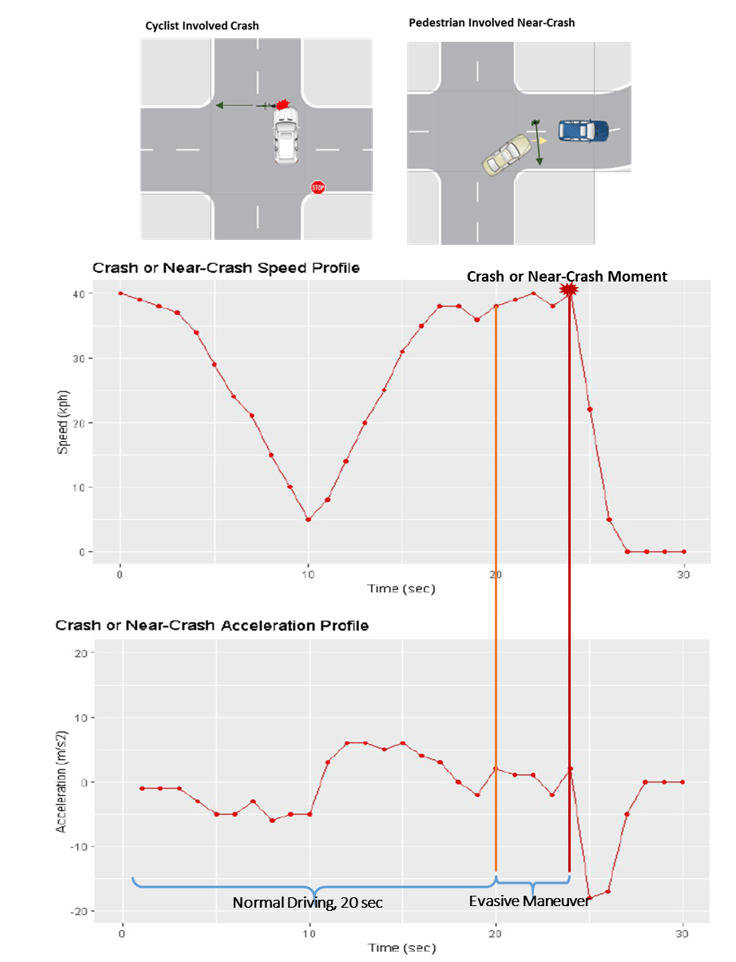Proactive Ped-Bike Safety: Naturalistic Assessment of Intentional Driving Volatility
To address pedestrian and bicycle safety goals, new data collection techniques can be used to enable a deeper understanding of vulnerable road user safety and generate new insights into the underlying key risk factors. Using the SHRP 2 Naturalistic Driving Study data, we explore how intentional driving volatility well before a crash or a near-crash event can be used as a leading indicator of pedestrian and bicycle crashes.
A unique aspect of the study is the inclusion of 25 to 30 seconds of pre-crash vehicle trajectory data on “baselines” (no event), near-crashes, and crashes. Excluding nearly 5 seconds of evasive maneuvers, about 20 seconds of pre-crash trajectories are compared with equivalent vehicle trajectories in crash and near-crash events. The trajectories exhibit systematic variations in microscopic driving decisions, termed driving volatility, based generally on acceleration, deceleration, negative and positive vehicular jerk, in both longitudinal and lateral directions. Heterogeneity-based discrete outcome models are developed to link pedestrian-bicyclist crash propensity with driving volatility and a host of driver, roadway, and vehicle related factors. Pre-crash intentional driving volatility has a statistically significant positive association with the probability of a pedestrian/bicycle crash or near-crash. Accounting for situational heterogeneity, risk of pedestrian-involved crashes or near-crashes is more sensitive to volatility in vehicular jerk compared to volatility in acceleration/deceleration. Probabilistic curves are developed providing insights into how the risk of pedestrian-bicyclist crashes vary as a function of intentional driving volatility in longitudinal and lateral directions. As a leading indicator of pedestrian-bicyclist safety, the driving volatility related findings provide new insights critical to the development of proactive behavioral countermeasures. Implications of the findings are discussed.


Publications:
Wali, B., Khattak, A., Mussah, A.R. (2021). Using Driving Volatility as a Leading Indicator of Unsafe Events Involving Vulnerable Road Users – A Naturalistic Driving Environment Study. (Under-review).
Major Contributors:
Asad J. Khattak, Ph.D., Beaman Distinguished Professor, University of Tennessee, Knoxville.
A.R. Mussah, M.S., Graduate Research Assistant, University of Tennessee, Knoxville.
Acknowledgement:
The data for this study were provided through a collaborative effort between Virginia Tech Transportation Institute, the U.S. Federal Highway Administration (FHWA), and Oak Ridge National Laboratory (ORNL). This paper is also based upon work supported by the Collaborative Sciences Center for Road Safety, a U.S. DOT funded National Transportation Center led by University of North Carolina – Chapel Hill in partnership with the University of Tennessee, Knoxville.